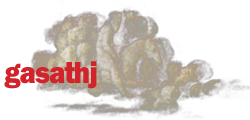Found Systems
For a long time, some of my work has focused on ‘found systems’ i.e. the practice of viewing the inherent dynamics of a particular environment as a self-contained system. Such a view implies the presence of some type of systemic behavior – the activity can be thought of as ‘generative achievement beyond computing’. A plenitude of potential systems is found in natural, biological, social and cultural environments. Incidentally, systems awareness was also key to the work of many conceptual artists of the 1960s (Lippard, 1970).
Typically, systems provide complex behavior, however confined within a specific behavioral scope. We get the impression of relatively unpredictable spatiotemporal behavior though the actual global nature of the system remains stationary. In natural systems, many constituent components – in effect, a hierarchy of sub-systems – interact toward the synthesis of overall lifelike behavior.
Obviously, computer programming affords the construction of unambiguous imaginary worlds we might also refer to as ‘found systems’, systems discovered through the practice of aesthetic navigation’ as mentioned above. Most generative art systems reside in confinement of abstract rendering; the algorithm manifests itself in 2D of 3D worlds, as line drawings or possibly, algorithmic audiovisual projects (Beyls, 2019).
Here we focus on the identification and isolation of systemic identity in natural and social systems i.e. systems appreciated through the physical presence of a material universe. Typically, depending on the type of universe, a number of distinctive features are identified in terms of both morphology and behavior. In fact, two approaches subsist: (1) one document (e.g. a movie excerpt) is considered, or (2) a large finite volume of unique data snippets (e.g. a group of pictures) is collected into a confined database. Then, we might potentially address recombinant algorithms to generate coherent fresh material from a selection of loosely related components.
As an example consider the audiovisual work Spinning Globe (2013), it consists of a 3D model of the earth; a slowly spinning globe equipped with 4 invisible virtual color sensors configured in a square position on top of the 2D projected image. Sensors measure changes in the RGB values at their respective locations, the intervals then control a sound producing algorithm: changes in the image are reflected as changes in the sound. Real-time visualization is taken care of by a Processing sketch, it communicates with a SuperCollider program running in the background through OSC (Open Sound Control). Figuring out an appropriate sonification strategy was challenging. Combining a 3-parameter control structure (intervals in Red, Green and Blue values) to control FM (frequency modulation unit generators) controlling carrier frequency, modulation frequency and modulation index, proved a fitting approach.
In the second example, entitled Mountain (2018), live images provided by an Internet camera are collected in real-time. The idea is to consider a live landscape, in particular, observe the complexity of atmospheric fluctuations. Clearly, the weather is thought of as a global macroscopic found system. Again we are interested and fascinated by the inherent behavioral complexity. Unlike a landscape painting, we are dealing with an ever-changing picture – the landscape remains the same though the visual impression is always different. Specific to the project: in the sequence of captured images, two consecutive images frames are compared and the total difference in RGB values is computed: the sum of the absolute value of the difference for all images pixels. Then, a color mapping procedure visualizes all pixels falling within a given ‘range of change’. Specifically, the analysis algorithm aims to be sensitive to minute changes in the atmosphere; tiny variations in cloud formations etc. Therefore, visual phenomena are ‘amplified’ and perceived, phenomena not normally visible to the naked eye.
Movies 1 and 2 document Spinning Globe and Mountain respectively. These commented documentaries were recorded at the Verbeke Foundation, Belgium, in conversation with Tineke Schuurmans ( https://verbekefoundation.com/en/ ). In addition; a small database of captured images illustrates the live landscape project.
References
Beyls, Peter (ed.) 2019: Coming Full Circle, Verbeke Foundation, Belgium
Lippard, Lucy 1973: Conceptual Art: The Dematerialization of the Art Object, New York: Praeger
